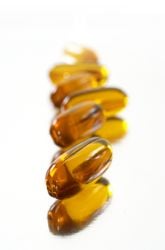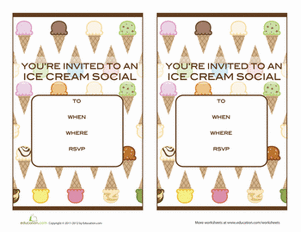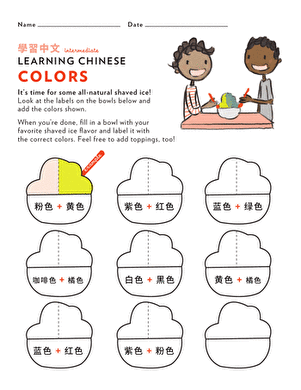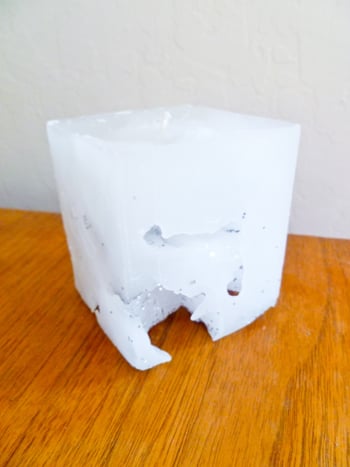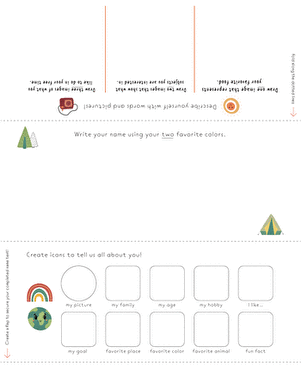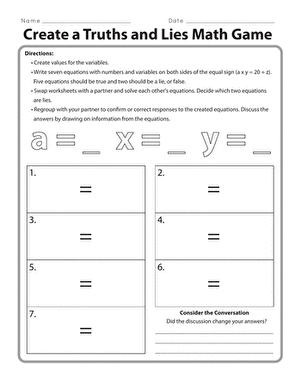Science project
Ice Melting
Have you ever watched an ice cube melt? The process of water contracting and expanding as it freezes and melts is a fascinating one. Perhaps you’ve noticed that the ice cubes in drinks melt faster if they are one shape rather than the other. Does it really make a difference what shape the ice cube is? The surface area of an ice cube takes on heat from the room, assuming the room is above freezing, and causes the ice to melt. How can you make an ice cube melt faster? How can you make it melt more slowly?
Problem:
Will the shape of an ice cube impact how fast the ice melts?
Materials:
- Cube-shaped ice tray
- Crescent-shaped ice tray
- Rectangle-shaped ice tray
- Tablespoon
- 3 clear plastic cups
- Small clock with minute and second hands
- Notebook
- Pen
Procedure:
- Measure 2 tablespoons of water into each ice tray. This will create 3 different types of ice cubes with the same amount of water, but different shapes. You may want to make extras so you can try different hypothesis.
- Place the ice trays in the freezer and allow water to freeze for several hours or overnight.
- Line up three clear plastic cups on the table or counter. They should be in a place where you can observe them easily.
- Remove the ice from the freezer and place one of each shape of ice cube into a plastic cup.
- Think about what you know about surface area. What do you think will happen if you create an ice cube that is flat and wide? Which ice cube shape do you think will melt the quickest? Write down your hypothesis, or what you think will happen during the experiment.
- Keep track of the ice in five minute increments. Jot down in a notebook how quickly each shape melts.
- Write down the time it takes each ice cube to melt completely.
Results:
The larger the surface area of the ice cube the more heat it absorbs, so the spherical ice cube will melt the slowest if it has the least surface area.
Why?
The shape of the rectangular ice cube is the flattest and has the most surface area. This means that heat will be absorbed over a larger area and thus the ice cube will melt faster. A crescent-shaped cube will melt the slowest.
The experiment proves that the amount of surface area makes the ice cube melt faster, but what if you tried different ways to melt the ice cubes? Repeat this experiment by trying techniques like melting the ice cubes in hot water. Seek an adult’s help when using hot water. Do you think the results will vary? Create a new hypothesis each time you try new techniques to melt the cubes and see if you are right in what you’ve guessed. Once you’re finished, you’ll be able to decide which ice cubes will keep your drinks cold the longest.
Education.com provides the Science Fair Project Ideas for informational purposes only. Education.com does not make any guarantee or representation regarding the Science Fair Project Ideas and is not responsible or liable for any loss or damage, directly or indirectly, caused by your use of such information. By accessing the Science Fair Project Ideas, you waive and renounce any claims against Education.com that arise thereof. In addition, your access to Education.com's website and Science Fair Project Ideas is covered by Education.com's Privacy Policy and site Terms of Use, which include limitations on Education.com's liability.
Warning is hereby given that not all Project Ideas are appropriate for all individuals or in all circumstances. Implementation of any Science Project Idea should be undertaken only in appropriate settings and with appropriate parental or other supervision. Reading and following the safety precautions of all materials used in a project is the sole responsibility of each individual. For further information, consult your state's handbook of Science Safety.


